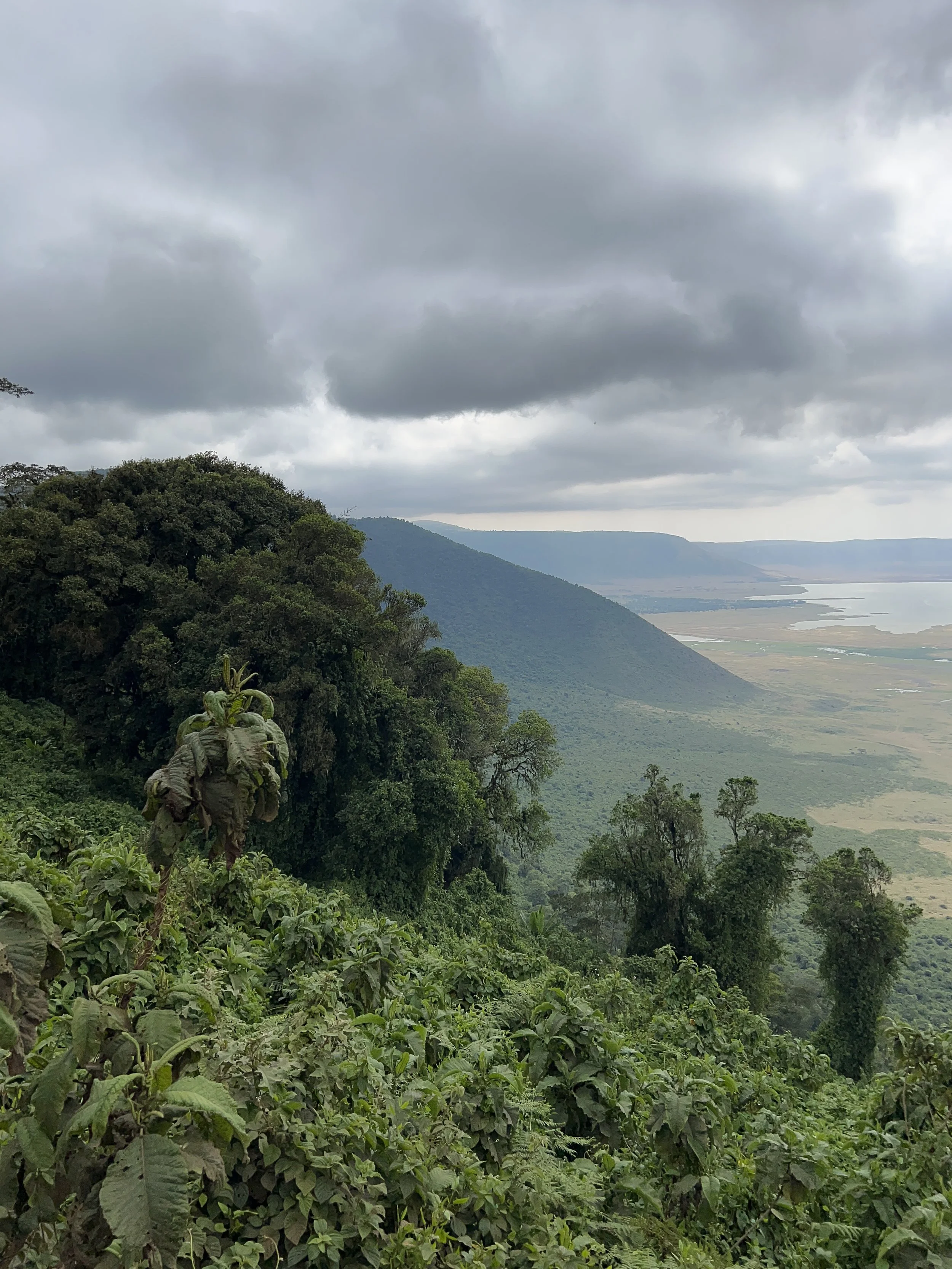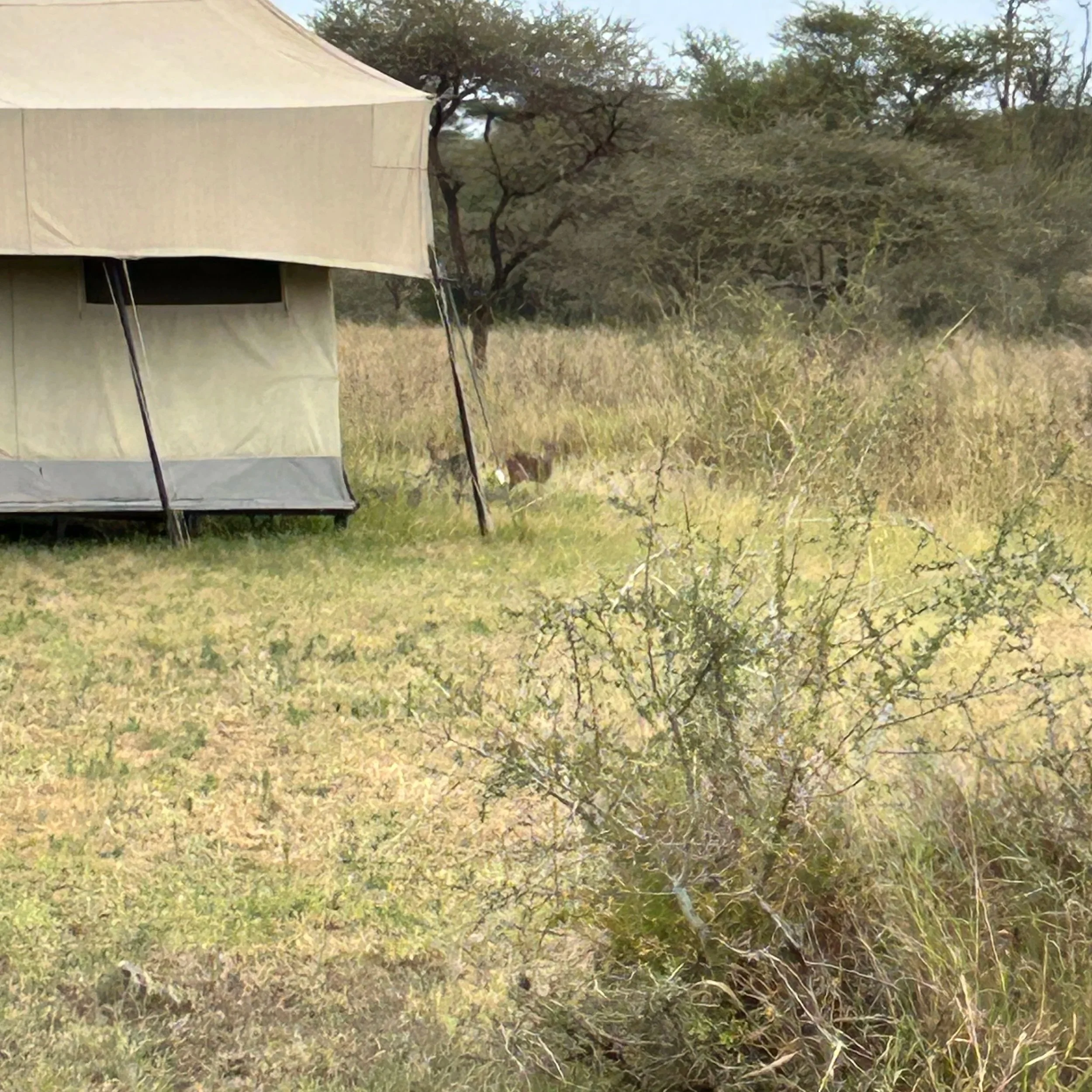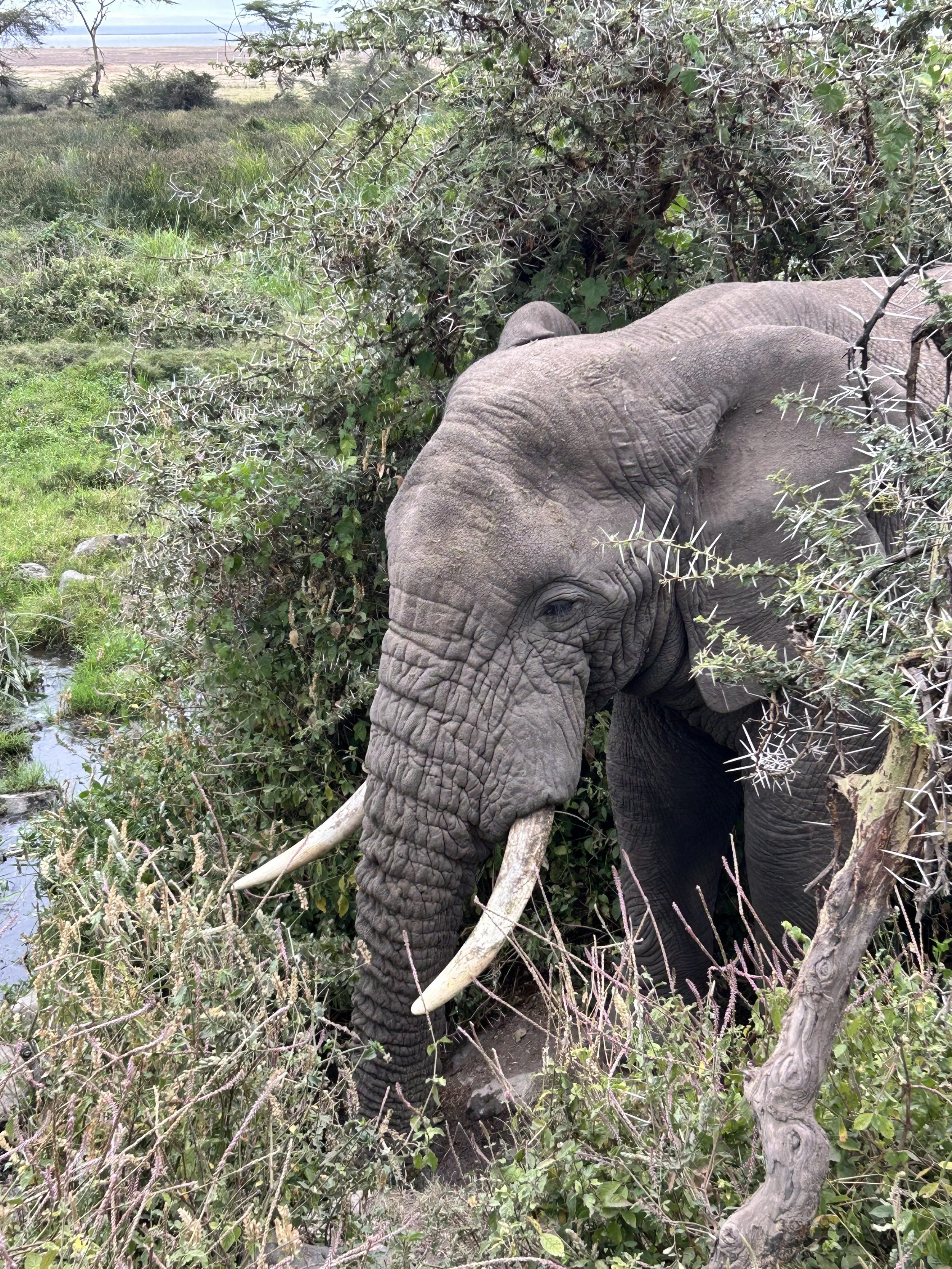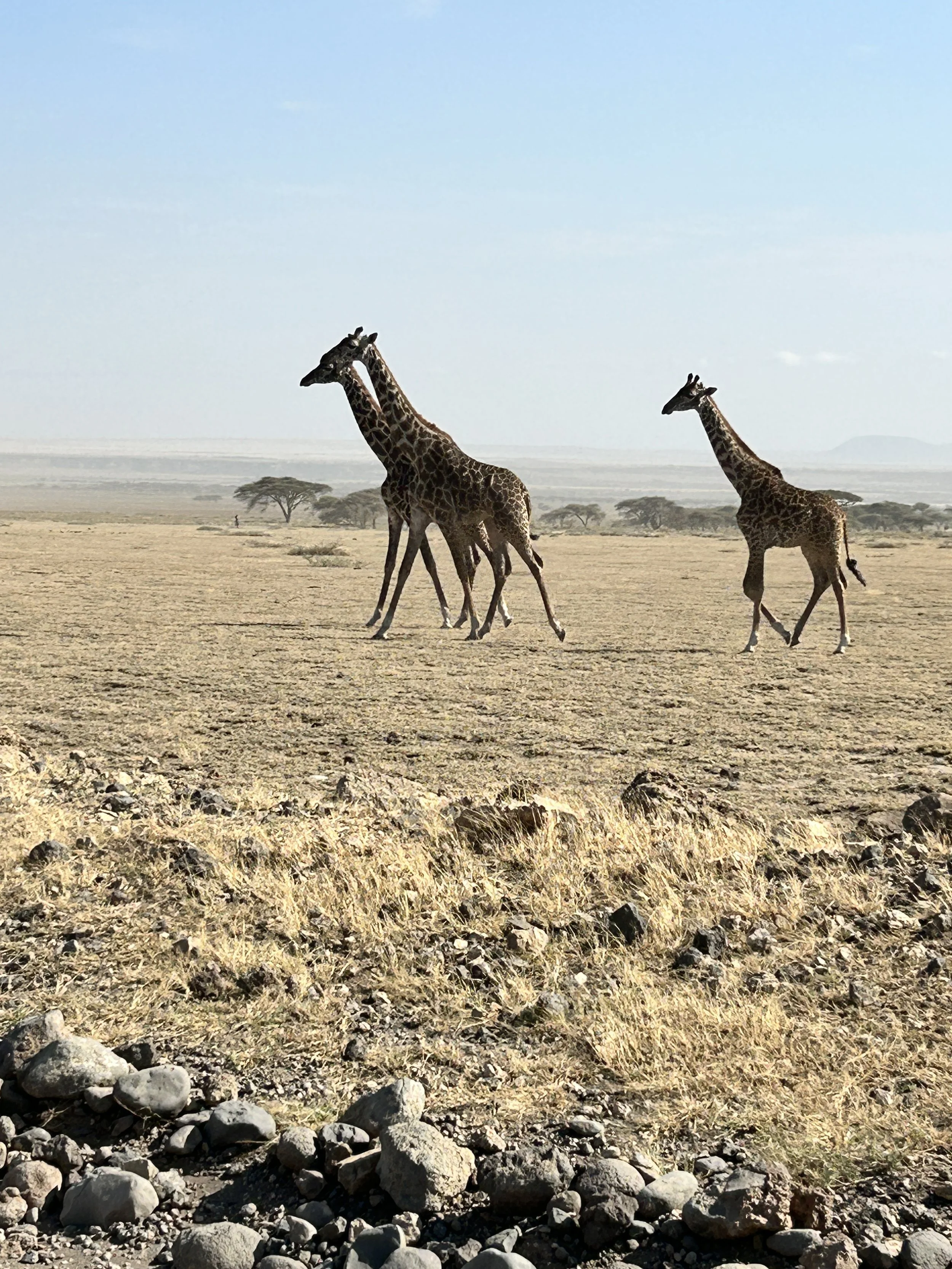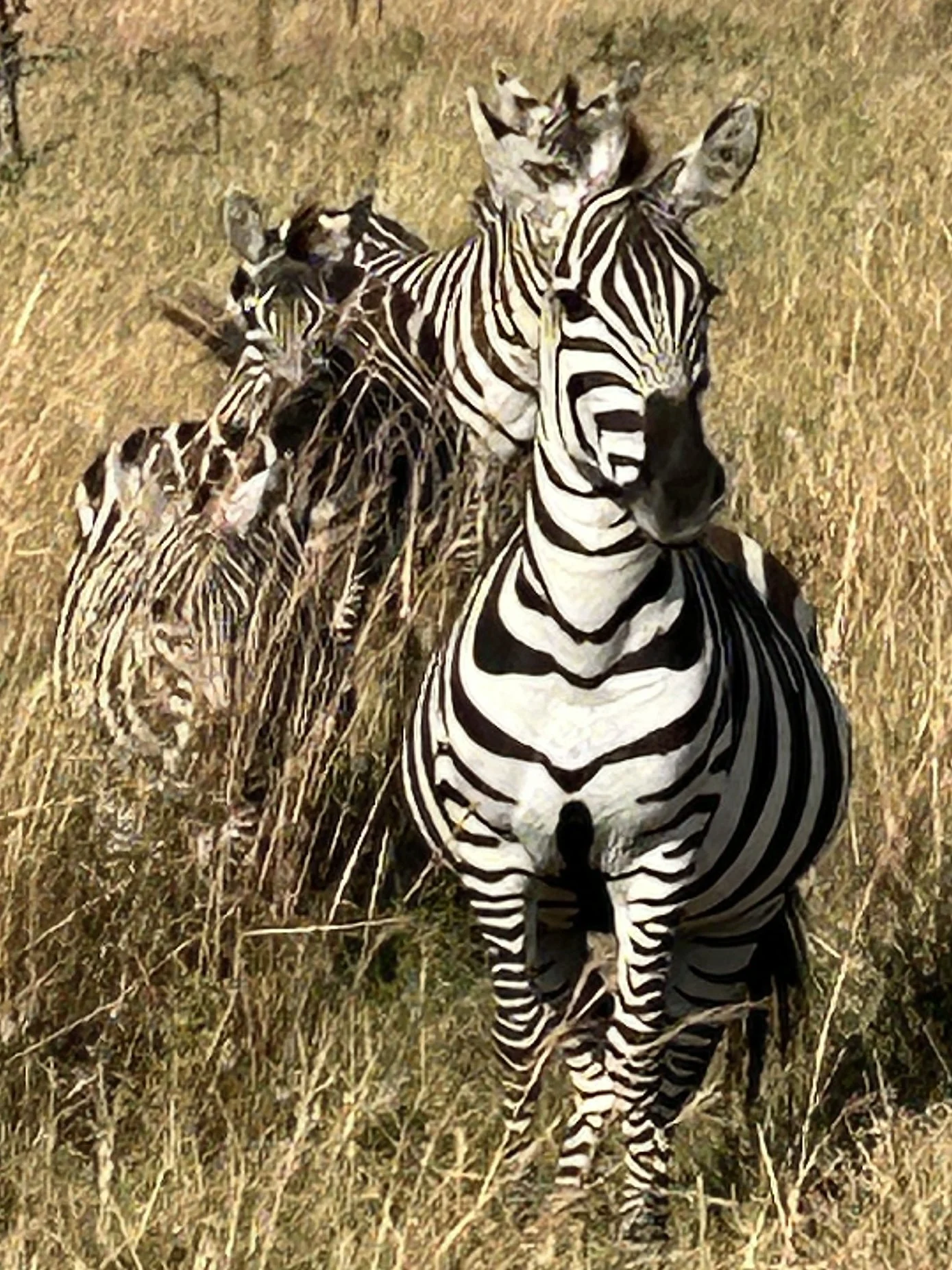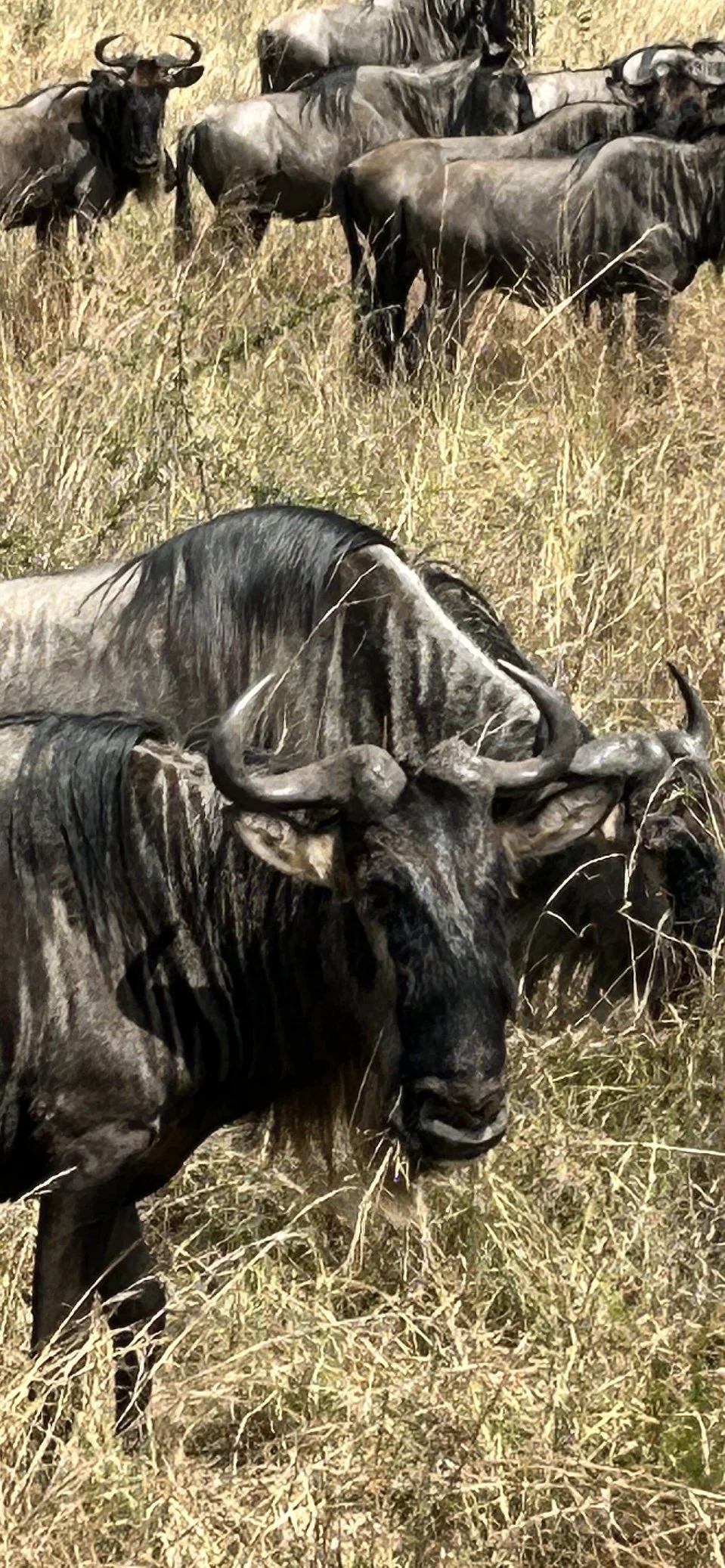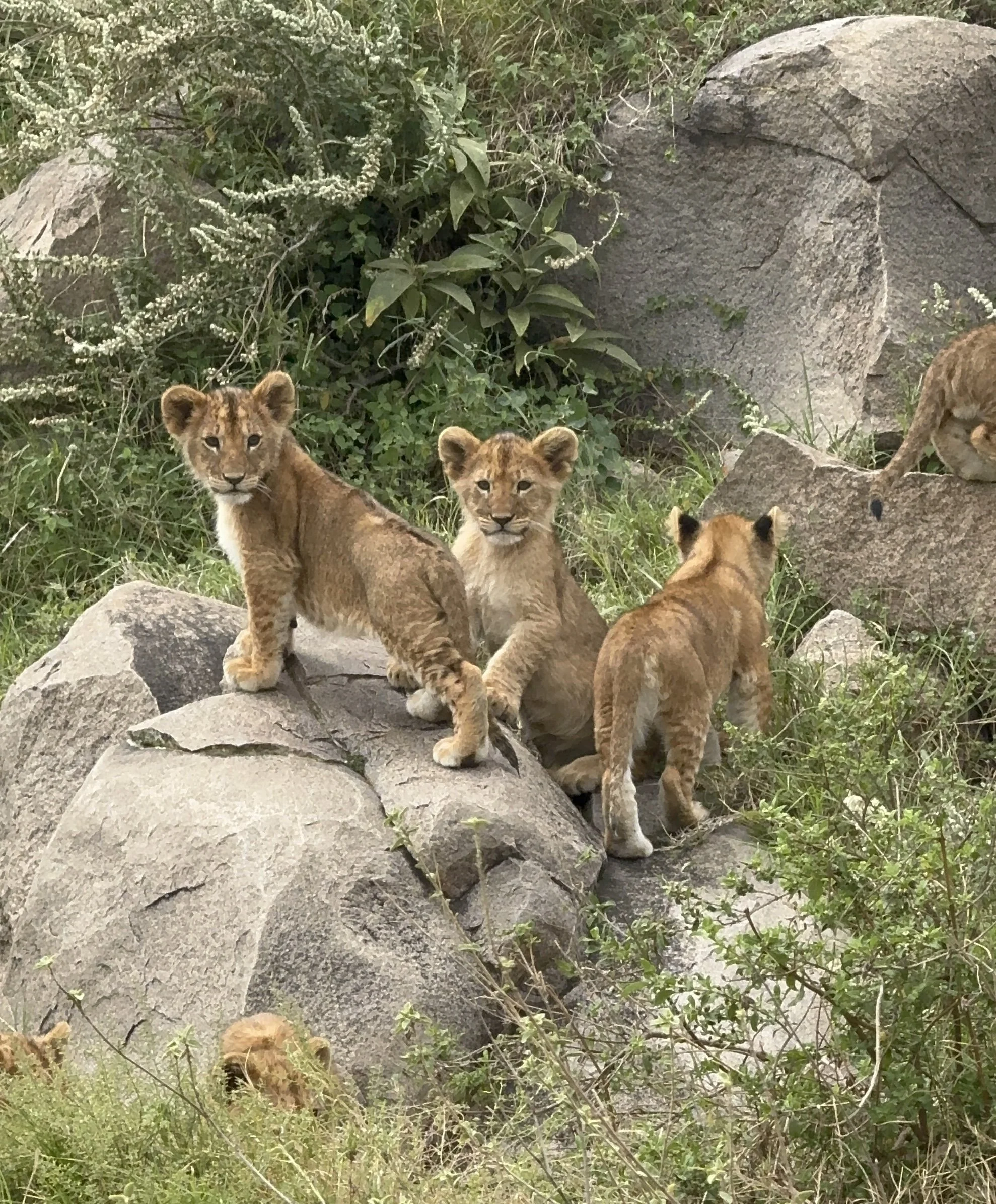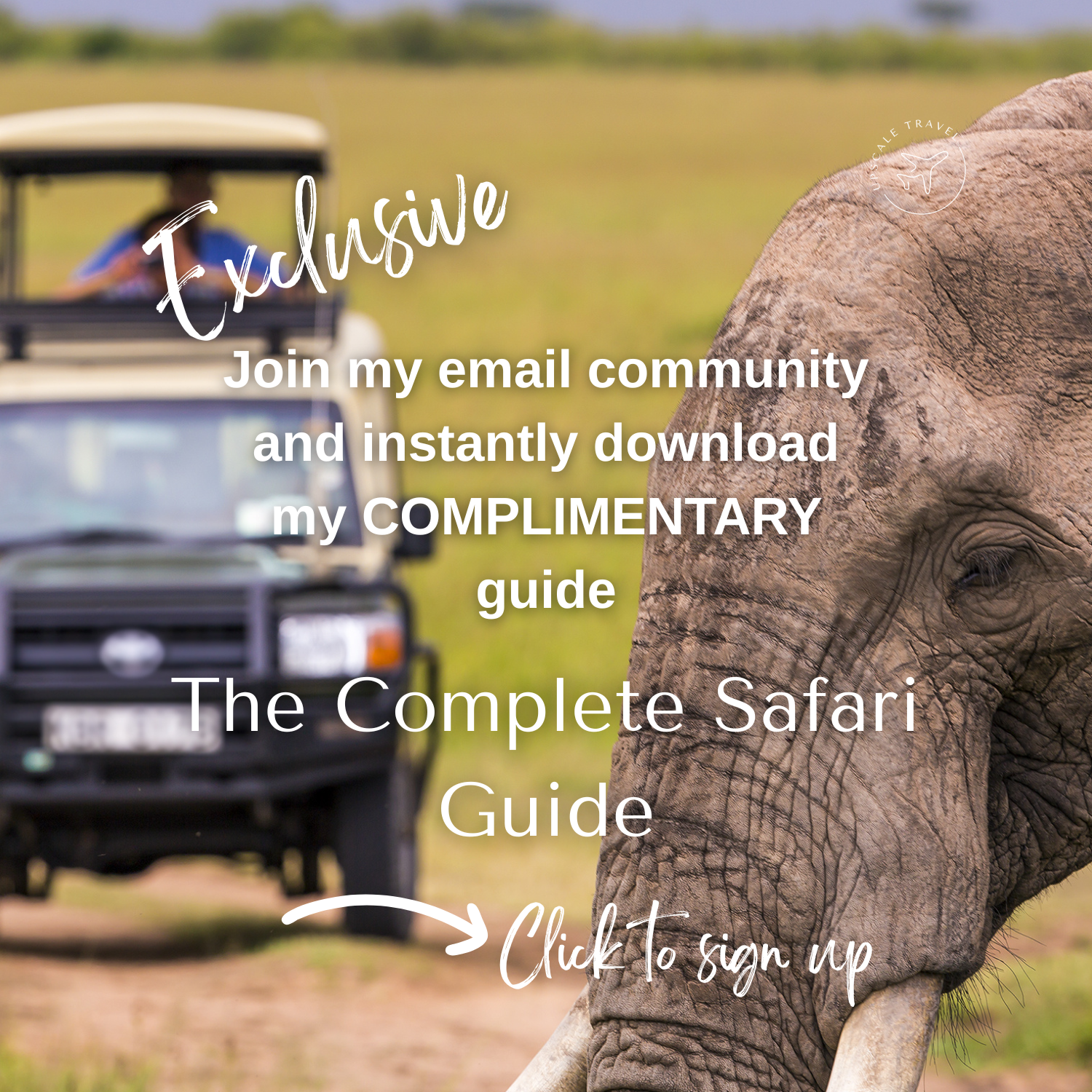Time Stretches in the Serengeti: A Soulful Safari Through Northern Tanzania
The first light breaks over the Serengeti, painting the endless plains in shades of amber and rose. From a hot air balloon suspended in the silent dawn, or seated in your safari vehicle as wildebeest stretch to every horizon, time itself seems to pause. This is Northern Tanzania—a place where the ancient rhythms of nature quiet the modern mind and remind us what it means to simply be present.
A premium safari through the Serengeti, Ngorongoro Crater, and Tarangire isn't merely a holiday; it's a journey into stillness, scale, and the timeless drama of the African wilderness. Here's what awaits when you surrender to the pace of the plains.
In this guide:
Serengeti: Endless Plains, Timeless Movement
Ngorongoro Crater: Lost World of Wildlife
Tarangire: Hidden Gem of the North
Lodging for the Premium Traveller
Building a Soulful Itinerary
Frequently Asked Questions
Essential Travel Tips
Serengeti: Endless Plains, Timeless Movement
The Serengeti ecosystem pulses with life in a way that defies description until you witness it firsthand. During the Great Migration, over two million wildebeest, zebras, and gazelles move in a perpetual circuit, driven by rain and instinct. Watching this ancient procession, you'll find yourself holding your breath as crocodiles lie in wait at river crossings, or as a cheetah calculates the perfect moment to strike.
What surprised me most wasn't the drama itself—it was everything in between. The long drives across the Serengeti never felt long because my eyes were constantly scanning for movement: a flick of a lion's tail in the tall grass, the silhouette of a leopard draped across an acacia branch, the sudden burst of a secretary bird taking flight. The landscape itself becomes hypnotic, and hours dissolve into moments.
The silence here is profound. Not empty silence, but a fullness—the whisper of grasses that smell unexpectedly like sage and mint, the distant call of a fish eagle, the soft crunch of tyres on ancient soil. There's no odour of decay or waste; the ecosystem's clean-up crew—vultures, hyenas, and black-backed jackals—work with such efficiency that the air remains fragrant only with the living earth.
In the Serengeti, you realise that space and silence aren't voids to be filled, but gifts to be received.
Ngorongoro Crater: Lost World of Wildlife
Descending into Ngorongoro Crater feels like entering a secret—a 600-metre drop into a collapsed volcanic caldera that cradles one of Africa's densest concentrations of wildlife. The road in winds through misty jungle at the crater’s rim, with baboon families and birds appearing from the lush growth. The crater floor is a self-contained paradise: grasslands dotted with flamingo-fringed lakes, acacia woodlands, and open plains where endangered black rhinos graze alongside Cape buffalo and elephants.
My most memorable moments here came from the welcome of a bull elephant, standing just a short distance away in a thicket. He was completely unperturbed by our presence and slowly meandered out of the bush and directly towards our parked vehicles; we had to quickly move on as he rightly reclaimed his territory. And the mother hyena and her two cubs which had carefully left the den to follow her across the plain, only to run and hide again in safety as she barked out a single warning.
The crater's microcosm also offers unexpected encounters: a serval cat hunting in the marshes, golden jackals playing near a waterhole, and thousands of pink flamingos creating a living brushstroke across Lake Magadi's alkaline shores. Every turn reveals something new, and the contained nature of the crater means wildlife viewing is consistently exceptional.
Tarangire: Hidden Gem of the North
While the Serengeti and Ngorongoro claim most of the spotlight, Tarangire National Park quietly steals the hearts of those who visit. This is where enormous ancient baobab trees—some over 1,000 years old—rise like sentinels across the landscape, their swollen trunks and gnarled branches creating a prehistoric backdrop for your safari.
Tarangire is elephant country. Herds numbering in the hundreds gather along the Tarangire River during the dry season, and watching these gentle giants interact—bathing, playing, caring for their young—offers an intimacy that's harder to find in busier parks. The diversity of trees here is remarkable: fever trees with their distinctive yellow-green bark, sausage trees dangling their curious fruits, and umbrella acacias providing shade for resting predators.
What I hadn't anticipated was how each tree plays a vital role in the ecosystem. Baobabs store thousands of litres of water in their trunks, providing shelter and sustenance to people and animals alike with fruit, leaves and water during droughts. Acacia trees offer a favourite meal for giraffes while hosting weaver bird colonies. Even dead trees become homes for hornbills and nesting sites for raptors. The interconnectedness is humbling.
With fewer visitors than the Serengeti, Tarangire offers that rare commodity in modern travel: space. It's become a favourite among seasoned safari-goers who've already ticked the famous boxes and now crave something deeper—quieter game drives, more authentic encounters, and the feeling that you've discovered something special.
Lodging for the Premium Traveller
Where you rest your head matters as much as what you see during the day. Northern Tanzania offers an exceptional range of accommodation styles to suit different travel preferences—from intimate tented camps where canvas is your only barrier to the wild, to comfortable lodges with modern amenities, to upgraded properties with crater views and exceptional service.
Hippo Trails tented safari camp with shy dik-diks grazing
Tented Camps for Authentic Immersion: For those seeking a genuine bush experience, tented camps place you directly in the landscape. At Hippo Trails in the Serengeti, the wildlife doesn't stop at nightfall—it amplifies. Lions roar close enough to vibrate through your chest, hippos grunt and rustle through the darkness mere metres from your tent, and the soundscape becomes a thrilling reminder that you're truly in their territory. During our stay, a resident group of dik-diks grazed quietly each morning, while a giraffe and Cape buffalo made regular appearances, unbothered by human presence. There's something profoundly humbling about lying in bed, separated from apex predators by only canvas, listening to the ancient symphony of the African night.
Lodges for Comfort and Accessibility: For travellers who prefer solid walls and a bit more distance from the nocturnal activities, lodges provide excellent wildlife access with added amenities. Country Lodge Karatu, positioned perfectly between Ngorongoro and Tarangire, offers a comfortable base with lovely grounds, attentive service, and the kind of reliable hot showers that feel especially welcome after a dusty day on safari. These mid-range properties often provide exceptional value without sacrificing the quality of your safari experience.
Speciality Locations: Some lodges offer unique cultural or landscape experiences beyond traditional safari camps. Lake Eyasi Safari Lodge, for instance, sits near the seasonal Lake Eyasi and provides access to encounters with the Hadzabe and Datoga communities—a chance to understand the human story of Tanzania alongside the wildlife narrative. The setting offers a different perspective, with flocks of cheeky peach faced lovebirds and a quieter, more contemplative atmosphere.
What Elevates Any Accommodation: Regardless of where you stay, what transforms a good lodge into a memorable one isn't just the amenities—it's the guides who know every animal's story, the staff who remember your coffee preference, and the chefs who turn local ingredients into memorable meals. It's the commitment to sustainability, with solar power and water conservation woven into operations. And it's the intangible sense that you're experiencing something authentic, not a manufactured version of wilderness.
Northern Tanzania's range of accommodation options means there is an itinerary that matches your comfort preferences while still accessing world-class wildlife viewing. If you have questions or would like to explore the wide variety of accommodation options, just reach out to me.
Building a Soulful Itinerary
The magic of a Northern Tanzania safari lies not in rushing from park to park, but in allowing each landscape to reveal itself at its own pace. Your tour operator will craft the flow between Tarangire, Ngorongoro, and the Serengeti based on seasonal wildlife patterns, migration movements, and your specific interests.
Private vs. Group Safaris: Private safaris offer unparalleled flexibility—depart when you choose, linger at sightings that captivate you, and enjoy exclusive use of your vehicle and guide. They're ideal for couples seeking romance, families with children, or photographers who need to position themselves perfectly for that golden-hour shot.
Small group safaris (ranging in size from 6 to 24 guests) can be wonderfully social and more budget-friendly while still maintaining an upgraded experience. The key is choosing operators which limit group sizes and provide guaranteed window seats for everyone.
Customisation for Your Story: Consider adding a hot air balloon safari over the Serengeti at sunrise, or a private bush dinner under the stars. Families with children will appreciate lodges with dedicated family tents, flexible meal times, and guides who excel at engaging young minds. For wildlife photographers, extended game drives during optimal lighting, bean bag supports for your lenses, and guides who understand composition can make all the difference.
The Tanzania Great Migration timing matters too. June through July brings the dramatic river crossings in the northern Serengeti, while January through March offers calving season in the southern plains—thousands of baby wildebeest taking their first wobbly steps, attracting every predator in the region.
Your Own Story of Tanzania Awaits
Northern Tanzania changed something in me. It wasn't just the obvious magnificence of lions on a kill or elephants at sunset (though those moments certainly imprinted themselves). It was the cumulative effect of days spent in genuine wilderness—the way my stress ebbed away, how hours in a vehicle felt like minutes, the surprising freshness of air scented only with sage-like grasses and earth.
Before arriving, I'd worried I might become jaded—that by day five, another zebra would be just another zebra. But the opposite proved true. Each encounter offered a new story: zebras play-fighting, their stripes backlit by golden light; a lone stallion standing sentinel while his herd drank; youngsters practising their kicks and spins. Every sighting became an opportunity to witness a behaviour I hadn't seen before, a different setting, a new interaction. The wonder deepened rather than diminished.
The long drives across the Serengeti never felt long because my eyes were constantly scanning for movement. The landscape itself becomes hypnotic, and hours dissolve into moments.
It was discovering that vultures and hyenas aren't grotesque but essential, that every tree has a valuable purpose, that the "empty" plains are actually teeming with invisible life. It was learning to spot the twitch of an ear in tall grass, to read the alarm calls of zebras, to appreciate the engineering of a termite mound.
This is travel that transforms. It's not about collecting trophy photos or ticking boxes—it's about rediscovering a slower rhythm, reconnecting with something primal, and returning home with your perspective quietly shifted.
Each encounter offered a new story. Every sighting became an opportunity to witness a behaviour I hadn't seen before. The wonder deepened rather than diminished.
How can I help you to discover your own Tanzania story?
Frequently Asked Questions
When is the best time to visit Northern Tanzania for safari? The answer depends on what you want to see. June through October offers dry season advantages—easier wildlife spotting as animals gather at water sources, and the famous river crossings in the northern Serengeti peak in July-August. January through March brings the calving season in the southern Serengeti, with thousands of newborn wildebeest attracting predators. The "green season" (November-May) offers lush landscapes, fewer tourists, excellent bird watching, and often better rates. Your tour operator can match the timing to your priorities.
How many days do you need for a Northern Tanzania safari? A minimum of 8-10 days allows you to experience the Serengeti, Ngorongoro Crater, and Tarangire without feeling rushed. Longer than that provides a more relaxed pace with time to truly absorb each location. Remember, this isn't about ticking boxes quickly—it's about allowing the landscape and wildlife to work their magic on you.
Is a Tanzania safari suitable for families with children? Absolutely. Many lodges welcome children and offer family tents, flexible meal times, and guides skilled at engaging young minds. However, some premium tented camps have minimum age requirements (often 6-12 years) due to the close proximity to wildlife. Discuss your family's needs with me to find the right accommodations and itinerary pace.
What should I pack for a Tanzania safari? Pack light, neutral-coloured clothing (khaki, olive, brown) that you can layer, as mornings can be cool and afternoons warm. Essential items include a wide-brimmed hat, quality sunglasses, sunscreen, insect repellent, comfortable closed-toe shoes for walking, and a light jacket or fleece. Most lodges offer a paid laundry service, so you can pack less. Don't forget binoculars—they transform your wildlife viewing experience.
Do I need vaccinations for Tanzania? Consult with a travel medicine clinic or your doctor well in advance of your trip (ideally 6-8 weeks before departure). They'll provide personalised recommendations based on your health history, itinerary, and current requirements. They can also advise on malaria prophylaxis and other health precautions specific to the regions you'll visit.
How much does a Northern Tanzania safari cost? Safari costs vary dramatically based on your choices: accommodation style (basic tented camps vs. premium lodges), group vs. private safari, season (green season vs. peak migration), trip length, and included activities. Budget safaris might start around $250-400 USD per person per day, while mid-range experiences typically run $400-700, and upgraded private safaris can exceed $1,000+ per person daily. The investment reflects not just accommodation, but expert guides, park fees, meals, and the entire support system that makes these experiences possible.
Is it safe to travel to Tanzania? Northern Tanzania's safari circuit is well-established and generally very safe for tourists. You'll be accompanied by experienced guides who understand wildlife behaviour and safety protocols. Standard travel precautions apply—secure your valuables, follow your guide's instructions, and stay aware of your surroundings. The wildlife itself poses minimal risk when you respect their space and follow guidelines. Millions of visitors safari safely in Tanzania each year.
What's the difference between Serengeti and Ngorongoro Crater? The Serengeti is a vast ecosystem (14,750 square kilometres) of endless plains known for the Great Migration and diverse habitats. Wildlife viewing depends on seasonal movements. Ngorongoro Crater is a contained, collapsed volcanic caldera (just 260 square kilometres) with incredibly dense, year-round wildlife populations. The Serengeti offers scale and the drama of migration; Ngorongoro provides concentrated viewing in a unique geological wonder. Both are essential to the Northern Tanzania experience.
There is a lot to consider when planning your ideal Tanzania safari. Reach out to me for assistance.
Essential Travel Tips
Visa & Entry Requirements
Check current entry requirements on the official government website. A tourist visa applied for in advance is roughly $100 USD.
Ensure your passport is valid for at least six months beyond your travel dates
What to Wear
Neutral colours (khaki, olive, brown, beige) help you blend into the environment
Avoid bright colours, especially blue and black, which can attract tsetse flies
Layer your clothing—mornings start cool, afternoons warm up
Comfortable, closed-toe shoes are essential
Health Precautions
Consult a travel medicine clinic 6-8 weeks before departure as vaccinations such as Yellow Fever may be required
Discuss malaria prophylaxis with your doctor
Pack a basic first-aid kit with any personal medications, antibiotics, antidiarrheals, and rehydration electrolytes
Tap water is not safe - brush teeth and drink only bottled water provided by your lodge
Use insect repellent and high-SPF sunscreen
Money Matters
US dollars are widely accepted (bring undamaged bills dated 2013 or newer)
Credit cards work at most lodges but carry cash for tips and markets
ATMs are available in Karatu and Arusha but scarce in remote areas, and will dispense Shillings
Tipping is customary: budget approximately $40-50 USD per person per day for guides and lodge staff
Connectivity
Wi-Fi is available at most lodges but can be slow or intermittent
International roaming can be expensive; local SIM cards are available in Arusha or consider an eSim
Download offline maps and any essential information before departure
Respect & Etiquette
Always listen to your guide's instructions, especially regarding wildlife safety
Never exit your vehicle unless your guide indicates it's safe
Keep voices low around animals to avoid disturbing them
Photography is welcome, but ask permission before photographing local people
Tanzania is a conservative country—dress modestly when visiting villages or towns
Environmental Responsibility
Take only photographs, leave only footprints
Avoid single-use plastics when possible
Stay on designated tracks to protect fragile ecosystems
Support lodges and operators committed to conservation and community development
Let's plan something unforgettable—your own story of Tanzania. Whether you're dreaming of your first African safari or you're a seasoned traveller ready to explore deeper, Northern Tanzania's Serengeti, Ngorongoro Crater, and Tarangire offer experiences that linger long after the dust settles.
Ready to begin your soulful safari through Northern Tanzania? Contact me to craft a private, customised itinerary that matches your travel style, timeline, and dreams. Because the best safaris aren't planned—they're designed, one meaningful moment at a time.
Interested in the Masai Mara and Amboseli National Parks of Kenya? Read my blog.

